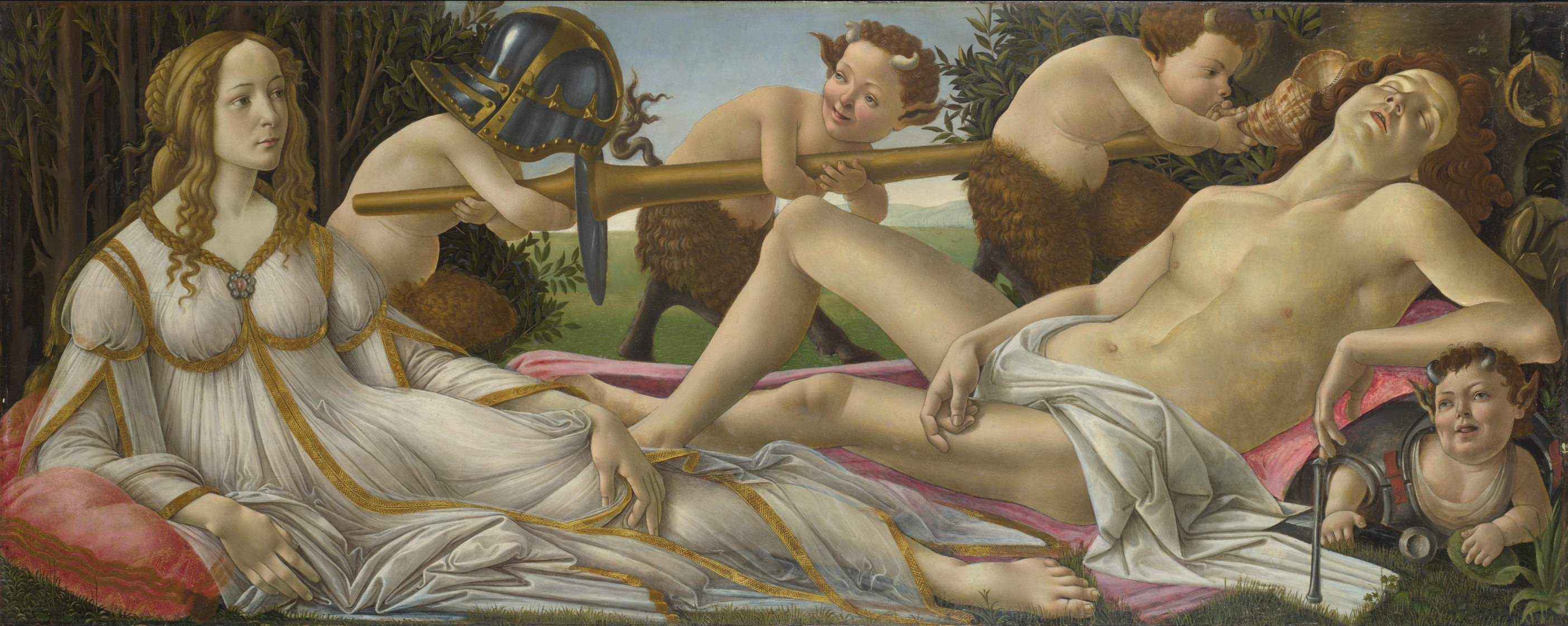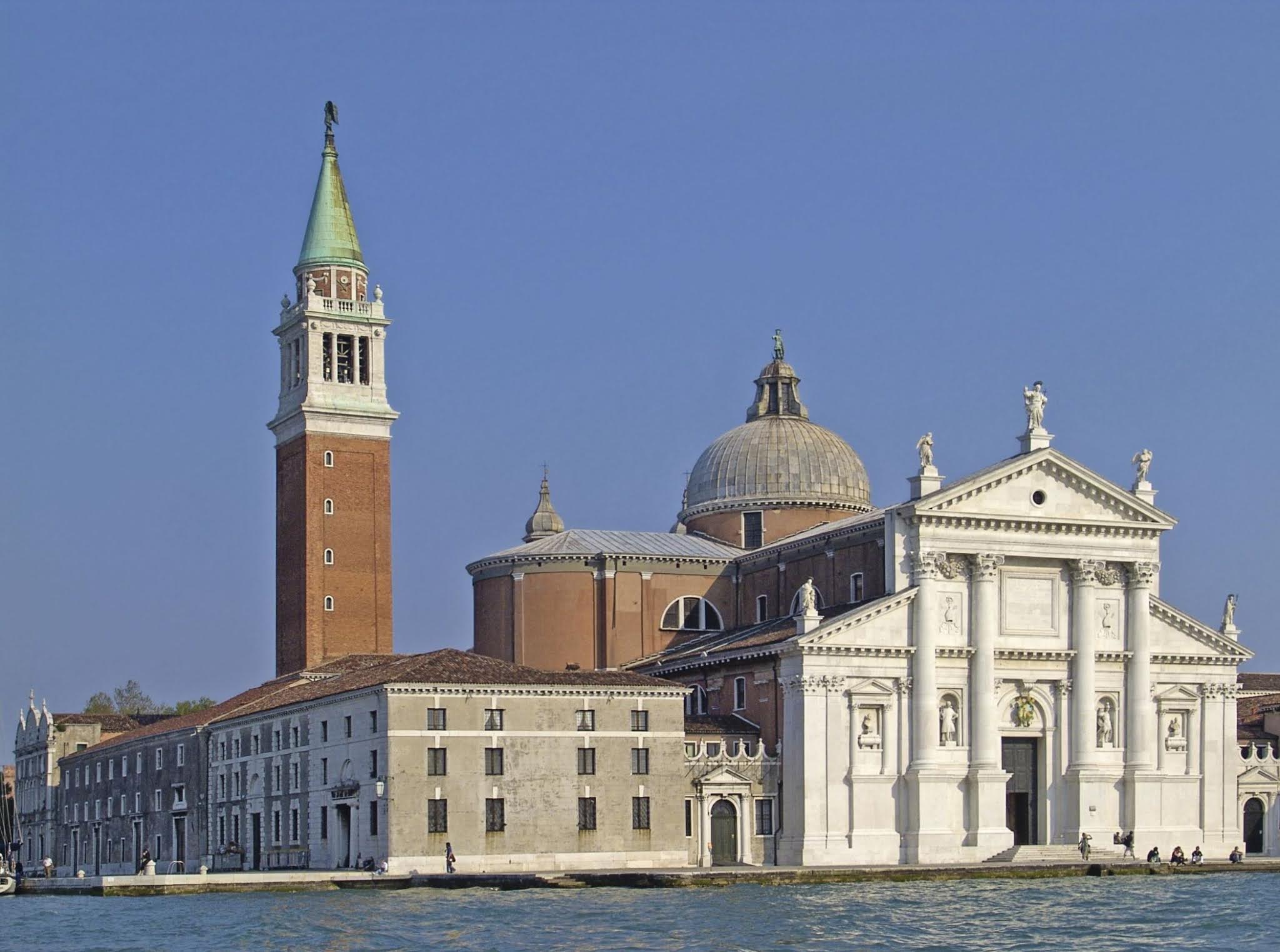Art Movements: Italian Renaissance Art and Architecture
Italian Renaissance art and architecture was a return to order and a contrast to the Gothic. It came right before the Baroque. At the end of the 1500s people declared that the dark ages were over and that they were living in a new age. Florence was a cultural and economic hotspot for Italy. The majority of Italian Renaissance art comes out of Florence. Almost all of the art was funded and commissioned by the leading family of the time, The Medici of Florence. While Florence claimed to be a democracy, the Medicis had enough power and money to rule the city. The father, Giovanni di Bocci de' Medici, was a banker and made the family wealthy. The Medici family employed Sandro Botticelli, famous Italian Renaissance painter. One of the brightest ones in his class, his talent was recognized quickly and he was removed from school. Then he was set up to become an apprentice, a practice taken for almost every young artist during the Renaissance. He apprenticed with Fra Filippo Lippi. Botticelli also worked closely with engraver Antonio del Pollaiuolo during his time painting frescoes. He opened his own workshop in 1470, when he was only about 25. His most famous work is The Birth of Venus, (below).
The Birth of Venus is a depiction of the story of Venus. Venus, the middle figure, was born of the sea spray and and emerged fully grown. In this painting, she arrives to land standing in a scallop shell. Then giving the impression to the audience that Venus is the pearl. The goddess is depicted as modest, covering herself with her long, blonde hair. This painting, like the majority of Florentine Renaissance work was most likely commissioned by the Medici family.
Venus and Mars (above) is another painting by Sandro Botticelli. As is now clear, due to the two examples, Botticelli specialized in mythological subjects. On the far left of the canvas, the audience sees Venus looking regal and quite uninterested in Mars, the man to the far right. Mars is shown as sleeping and perhaps snoring. It seems as if nothing could wake him. The rest of the figures are four little boys. They are playing with his armor and seem to be making lots of noise, yet neither Venus nor Mars seems to be phased by them.
Leonardo da Vinci is among some of the most popular of all artists. When his name is heard, many just think of him as an artist. On the contrary, he worked in both engineering and art. Born in 1452, he was an artist, sculptor, inventor, and engineer. Some of his most famous works include The Last Supper (above), The Mona Lisa, and Lady with an Ermine. As a student, da Vinci did not apply himself in fields of mathematics or writing until much later, his 20s and 30s. Although he was not as academically inclined in his youth, his artistic talent and passion began early. He apprenticed well-known artist Andrea del Verrocchio when he was just 15. Leonardo's training in the studio was not only in painting, but sculpting, and mechanical arts. He worked here for the next five years. He was hired by the Duke of Milan in 1482 to be an engineer and painter. He was quite busy while working here. Many of da Vinci's works remain unfinished, for he was working in science and art during his Milan years. He moved back to Florence in 1500. This is where he painted The Mona Lisa.
Leonardo painted this portrait around 1490. The woman in the portrait is Cecilia Gallerani, Duke of Milan's mistress. It was commissioned during the time that da Vinci was working for the Duke of Milan. This work depicts Cecilia Gallerani holding a weasel. There are many interpretations of the symbolism of the animal. Some say it symbolizes her modesty, and others insist it is a joke. The word for weasel in Greek is galee. This is a poke at Gallerani's name (galee, Gallerani).
Known as the best architect of 16th century Italy, Andrea Palladio was most famous for his Italian villas and churches. He was born in 1508. Palladio wrote The Four Books of Architecture. It was published in 1570. He was also known for his covered porches supported by columns. He apprenticed a sculptor until he was 16. Basilica di San Giorgio Maggiore (above) is his most famous church. It is visible to and welcomes incoming travelers into Italy by sea. This church has a very interesting facade, as there are two pediments.
This detail (above) zooms in on the church's unique facade. The two pediments are separated by the columns. The bottom one is "broken". The top pediment is intact and quite a bit smaller. The four columns are Corinthian columns.
Michelango, or Michelangelo di Lodovico Buonarroti Simoni, was born in 1475. He was an architect, painter, and sculptor. He was very well know during his time and still is to this day. While his architectural style was much more mannerist, his sculpture and paintings are considered very good examples of the Italian Renaissance. At 13, fairly late for the time period, he began his apprenticeship Domenico Ghirlandaio. Lorenzo de’ Medici, part of the prominent Medici family mentioned earlier, noticed his talent and allowed him access to the Medici art collection, a huge opportunity.
Above is a sculpture by Michelangelo. The Peita is a marble statue of the mourning Virgin Mary and her son Jesus's lifeless body lying on her lap. She gazes down mournfully at his body. This sculpture is in Saint Peter's Basilica (click the word to learn more.)
The Creation of Adam is just one piece of Michelangelo's most famous artwork, the ceiling painting in the Sistine Chapel. The most famous snapshot being God's outreached hand just nearly missing Adam's. God is floating between the heavens and earth surrounded by angels draped in burgundy fabric. The true creation of Adam that is mentioned in Genesis of the Bible (God creating him from the dust of the earth and breathing in his nostrils the breath of life) is surprisingly never represented in Renaissance art.
Donato di Niccolò di Betto Bardi, born in 1386, was an Italian Renaissance sculptor. He worked in both marble and bronze. In the early 1400's, he started work in the studio of Lorenzo Ghiberti, who worked in only bronze.
David by Donatello was commissioned by the Medici family. It is a bronze statue of David after defeating the giant, Goliath. At his feet lies his head, and he is holding the sword that was used to cut off his head after he slayed him with the stones. Donatello changed the way that David was depicted. Before he was seen as a king, but Donatello depicted him as youthful.
Vocabulary:
- The Medici of Florence: funded and commissioned most of the art of the time; leading family of the time
- Venus: the Greek goddess of love and beauty
- Mars: the Roman god of war
- Apprentice: to learn from an older and more experienced artist etc. and work in their workshop
- Pediment: the triangular upper part of the front of a building in classical style
Works Cited
"Andrea Palladio." Britannica School, Encyclopædia Britannica, 7 Feb. 2020. school.eb.com/levels/high/article/Andrea-Palladio/276257. Accessed 31 Aug. 2020.
"The Birth of Venus by Botticelli." Le Gallerie Degli Uffizi, www.uffizi.it/en/artworks/birth-of-venus. Accessed 23 July 2020.
"The Creation of Adam." Michelangelo.org, www.michelangelo.org/the-creation-of-adam.jsp. Accessed 30 Aug. 2020.
"Donatello." Britannica School, Encyclopædia Britannica, 5 Sep. 2019. school.eb.com/levels/high/article/Donatello/30901. Accessed 30 Aug. 2020.
"Donatello's David." Italian Renaissance, www.italianrenaissance.org/donatellos-david/. Accessed 30 Aug. 2020.
"Italian Renaissance." History.com, www.history.com/topics/renaissance/italian-renaissance. Accessed 23 July 2020.
Kleiner, Fred S. Gardner's Art through the Ages: A Global History. 15th ed., Boston, Cengage Learning, 2016.
"Lady with an Ermine by Leonardo da Vinci." Totally History, totallyhistory.com/lady-with-an-ermine/. Accessed 13 Aug. 2020.
"Leonardo da Vinci." Britannica School, Encyclopædia Britannica, 2 Aug. 2018. school.eb.com/levels/high/article/Leonardo-da-Vinci/108470. Accessed 29 Jul. 2020.
Leonardo da Vinci: Last Supper. Image. Britannica School, Encyclopædia Britannica, 7 Feb. 2020. school.eb.com/levels/high/assembly/view/232045. Accessed 29 Jul. 2020.
"Michelangelo." Britannica School, Encyclopædia Britannica, 7 Nov. 2017. school.eb.com/levels/high/article/Michelangelo/108722. Accessed 28 Aug. 2020.
Michelangelo. Image. Britannica School, Encyclopædia Britannica, 7 Feb. 2020. school.eb.com/levels/high/assembly/view/159301. Accessed 28 Aug. 2020.
"Sandro Botticelli." The National Gallery UK, www.nationalgallery.org.uk/artists/sandro-botticelli. Accessed 23 July 2020.
"Sandro Botticelli: Venus and Mars in Renaissance Itlay." The National Gallery, www.nationalgallery.org.uk/paintings/sandro-botticelli-venus-and-mars. Accessed 24 July 2020.
"San Giorgio Maggiore." Britannica School, Encyclopædia Britannica, 8 Apr. 2011. school.eb.com/levels/high/article/San-Giorgio-Maggiore/65312. Accessed 14 Aug. 2020.











No comments
Post a Comment